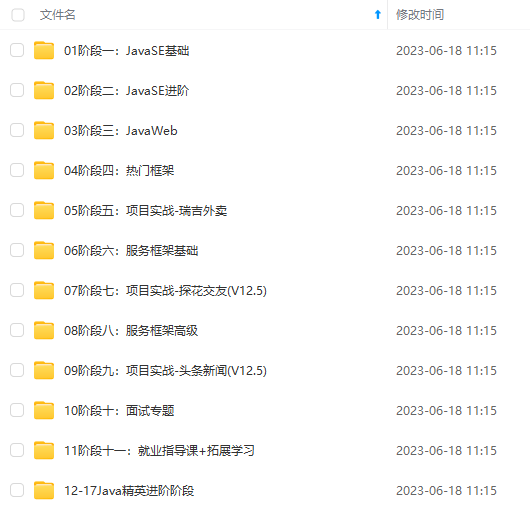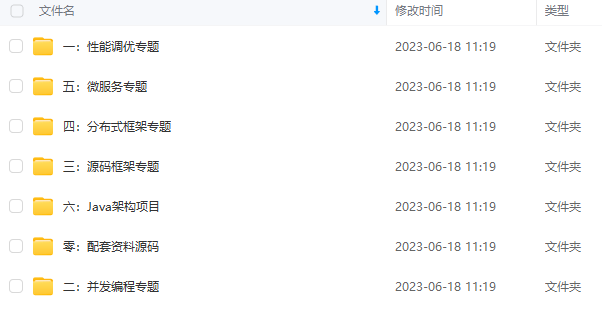@Override
public ByteBuf cumulate(ByteBufAllocator alloc, ByteBuf cumulation, ByteBuf in) { //@1
ByteBuf buffer;
if (cumulation.writerIndex() > cumulation.maxCapacity() - in.readableBytes() //@2
|| cumulation.refCnt() > 1) { //@3
// Expand cumulation (by replace it) when either there is not more room in the buffer
// or if the refCnt is greater then 1 which may happen when the user use slice().retain() or
// duplicate().retain().
//
// See:
// - https://github.com/netty/netty/issues/2327
// - https://github.com/netty/netty/issues/1764
buffer = expandCumulation(alloc, cumulation, in.readableBytes()); //@4
} else {
buffer = cumulation;
}
buffer.writeBytes(in); // @5
in.release(); //@6
return buffer;
}
};
代码@1:参数1:具体的内存分配器,参数2:已累计接收的自己缓冲,参数3:本次读取的字节缓冲区。
代码@2:首先检测当前的累积缓存区是否能够容纳新增加的ByteBuf,如果容量不够,则需要扩展ByteBuf,为了避免内存泄漏,手动去扩展。
代码@3:如果累积缓存区引用数超过1,也需要扩展。
代码@4:扩充累积缓存区。
代码@5:将新输入的字节写入到累积缓存区。
代码@6:释放缓存区。
代码@4:扩展缓冲区实现。
static ByteBuf expandCumulation(ByteBufAllocator alloc, ByteBuf cumulation, int readable) {
ByteBuf oldCumulation = cumulation;
cumulation = alloc.buffer(oldCumulation.readableBytes() + readable);
cumulation.writeBytes(oldCumulation);
oldCumulation.release();
return cumulation;
}
这里有个非常关键的点:每次扩展的时候,都是产生一个新的累积缓存区,这里主要是确保每一次通道读,所涉及的缓存区不是同一个,这样减少释放跟踪的难度,避免内存泄露。
2.2 相关事件处理
解码器 ByteToMessageDecoder 在 Netty 中属于 InBound(输入方向)。主要关注的事件包括 handlerRemoved、channelReader、channelReadComplete、channelInactive。
2.2.1 handlerRemoved事件
handler从ChannelPipeline中移除时调用。
@Override
public final void handlerRemoved(ChannelHandlerContext ctx) throws Exception {
ByteBuf buf = internalBuffer();
int readable = buf.readableBytes();
if (readable > 0) {
ByteBuf bytes = buf.readBytes(readable);
buf.release();
ctx.fireChannelRead(bytes);
ctx.fireChannelReadComplete();
} else {
buf.release();
}
cumulation = null;
handlerRemoved0(ctx);
}
该方法主要的实现思路是,如果内部的累积缓存区可读,则需要将剩余的字节处理,然后释放内部累积缓存区,并设置为空,然后提供一个钩子函数,供子类去实现。handlerRemoved0(ctx)。
2.2.2 channelRead 通道读事件
@Override
public void channelRead(ChannelHandlerContext ctx, Object msg) throws Exception {
if (msg instanceof ByteBuf) { //@1
RecyclableArrayList out = RecyclableArrayList.newInstance(); //@2
try {
ByteBuf data = (ByteBuf) msg;
first = cumulation == null; //@3
if (first) {
cumulation = data;
} else {
cumulation = cumulator.cumulate(ctx.alloc(), cumulation, data); //@4
}
callDecode(ctx, cumulation, out); //@5
} catch (DecoderException e) {
throw e;
} catch (Throwable t) {
throw new DecoderException(t);
} finally {
if (cumulation != null && !cumulation.isReadable()) { //@6
cumulation.release();
cumulation = null;
}
int size = out.size();
for (int i = 0; i < size; i ++) { //@7
ctx.fireChannelRead(out.get(i));
}
out.recycle(); //@8
}
} else {
ctx.fireChannelRead(msg);
}
}
代码@1:如果消息是字节流(ByteBuf),则进行解码,否则直接转发给下游Handler处理。
代码@2:新建一个List,每一个元素代表解码后的一条完整的客户端请求,在Netty 5的实现中,ChannelHandler的执行是线程安全的,因为每一个Channel相关事件的执行都在与Channel绑定的线程执行器(EventLoop)中执行。由于这里使用了线程本地对象池(Recycler),ArrayList是可以重复使用的。能在这里使用线程本地池,为了线程安全,线程池的的线程个数应该是1个,在这里,我觉得非常有必要再深究一下Netty线程模型关于执行相关的具体细节,故该篇文章讲解完后,会进一步回到前面的Netty线程模型篇,细化一下SingleThreadEventExecutor的执行逻辑。
代码@3、4:如果当前的累积区为空,说明是初次解码,直接设置累积区为本次读入的字节。否则,将读入的字节添加到累积区。合并累积区已在上文中讲解。
代码@5:解码器具体逻辑实现,稍后会详解。
代码@6:如果累积缓存区不为空并且不可读,释放该累积缓存区。
代码@7:将解码后的一条一条客户端请求(消息)转发给下游Handler进行处理。
代码@8:将资源回收,放入对象池,其实这里有资源泄露的可能。
接下来,重点看callDecode方法:
/**
-
Called once data should be decoded from the given {@link ByteBuf}. This method will call
-
{@link #decode(ChannelHandlerContext, ByteBuf, List)} as long as decoding should take place.
-
@param ctx the {@link ChannelHandlerContext} which this {@link ByteToMessageDecoder} belongs to
-
@param in the {@link ByteBuf} from which to read data
-
@param out the {@link List} to which decoded messages should be added
*/
protected void callDecode(ChannelHandlerContext ctx, ByteBuf in, List out) {
try {
while (in.isReadable()) { //@1
int outSize = out.size(); //@2
int oldInputLength = in.readableBytes(); //@3
decode(ctx, in, out); //@4
// Check if this handler was removed before continuing the loop.
// If it was removed, it is not safe to continue to operate on the buffer.
//
// See https://github.com/netty/netty/issues/1664
if (ctx.isRemoved()) {
break;
}
if (outSize == out.size()) { //@5
if (oldInputLength == in.readableBytes()) {
break;
} else {
continue;
}
}
if (oldInputLength == in.readableBytes()) { //@6
throw new DecoderException(
StringUtil.simpleClassName(getClass()) +
“.decode() did not read anything but decoded a message.”);
}
if (isSingleDecode()) {
break;
}
}
} catch (DecoderException e) {
throw e;
} catch (Throwable cause) {
throw new DecoderException(cause);
}
}
参数详解:
-
ChannelHandlerContext ctx 执行上下文。
-
ByteBuf in 当前累积的缓存区。
-
out 解码出消息的集合。
代码@1:如果当前累积区可读。
代码@2:当前解码后的消息条数,该值主要是判断本次解码,是否成功解码到消息。
代码@3:当前累积缓存区当前可读字节数。同样是用于判断是否成功解码。
代码@4:执行具体的解码实现(也成为编码解码协议的具体实现),该方法在具体的子类中实现。从这里也可以看出,整个ByteToMessageDecoder的设计,使用了模板模式。
代码@5:如果没有解码出消息(累积缓存区中的内容没有包含一个完整的请求信息,并且累积缓存区的可读数据没有发生变化,则结束本次解码。
代码@6:如果解码出消息,但是累积缓存区的可读数据没有发生变化,则抛出异常。
从代码@5,@6:可以得出如下重要结论,并且在我们实现自己的解码器时要特别注意:
-
如果没有成功从本次累积缓存区解码出需要的消息,则不能修改累积缓存区的readerIndex,writerIndex。
-
如果解码出合适的消息,则readerIndex,writerIndex要修改成已解析的字节的位置。
2.2.3 通道非激活事件实现 channelInactive
@Override
public void channelInactive(ChannelHandlerContext ctx) throws Exception {
RecyclableArrayList out = RecyclableArrayList.newInstance();
try {
if (cumulation != null) {
callDecode(ctx, cumulation, out);
decodeLast(ctx, cumulation, out);
} else {
decodeLast(ctx, Unpooled.EMPTY_BUFFER, out);
}
} catch (DecoderException e) {
throw e;
} catch (Exception e) {
throw new DecoderException(e);
} finally {
try {
if (cumulation != null) {
cumulation.release();
cumulation = null;
}
int size = out.size();
for (int i = 0; i < size; i++) {
ctx.fireChannelRead(out.get(i));
}
if (size > 0) {
// Something was read, call fireChannelReadComplete()
ctx.fireChannelReadComplete();
}
ctx.fireChannelInactive();
} finally {
// recycle in all cases
out.recycle();
}
}
}
channelInActivie,通道变为非激活时触发的事件,处理逻辑就是如果当前的累积区有数据,则需要将数据解码并发送给下游handler,处理通道读相关事件。这里对有调用一个新的方法,decodeLast,表示通道转为非激活状态最后一次解码,可以供子类去实现。
关于ByteToMessageDecoder的实现原理就分析到这了,ByteToMessageDecoder可以是说是Netty提供的一个标签解码器的模板(典型的模板模式),用户可以基于此模板定制自己的私有协议。为了更好定制自己的解码器,接下来将重点分析Netty提供的一些解码器的实现。
3、LineBasedFrameDecoder 解码器实现分析
===============================
LineBasedFrameDecoder是基于行分割符符合的解码器。(\n 或\r\n)。
源码分析LineBasedFrameDecoder的解码实现。
/**
-
Create a frame out of the {@link ByteBuf} and return it.
-
@param ctx the {@link ChannelHandlerContext} which this {@link ByteToMessageDecoder} belongs to
-
@param buffer the {@link ByteBuf} from which to read data
-
@return frame the {@link ByteBuf} which represent the frame or {@code null} if no frame could
-
be created.
*/
protected Object decode(ChannelHandlerContext ctx, ByteBuf buffer) throws Exception {
final int eol = findEndOfLine(buffer); //@1
if (!discarding) { //@2
if (eol >= 0) { //@3
final ByteBuf frame;
final int length = eol - buffer.readerIndex(); //@4
final int delimLength = buffer.getByte(eol) == ‘\r’? 2 : 1; //@5
if (length > maxLength) { //@6
buffer.readerIndex(eol + delimLength);
fail(ctx, length);
return null;
}
if (stripDelimiter) { // @7
frame = buffer.readSlice(length);
buffer.skipBytes(delimLength);
} else {
frame = buffer.readSlice(length + delimLength);
}
return frame.retain(); //@8
} else { //@9
final int length = buffer.readableBytes();
if (length > maxLength) { // @10
discardedBytes = length;
buffer.readerIndex(buffer.writerIndex());
discarding = true;
if (failFast) {
fail(ctx, "over " + discardedBytes);
}
}
return null;
}
} else {
if (eol >= 0) {
final int length = discardedBytes + eol - buffer.readerIndex();
final int delimLength = buffer.getByte(eol) == ‘\r’? 2 : 1;
buffer.readerIndex(eol + delimLength);
discardedBytes = 0;
discarding = false;
if (!failFast) {
fail(ctx, length);
}
} else {
discardedBytes = buffer.readableBytes();
buffer.readerIndex(buffer.writerIndex());
}
return null;
}
}
代码@1:从累积缓存区中,试图找到行结束符合(\r\n),具体实现再看。
代码@2:是否丢弃了一部分数据,当解码后的数据长度超过帧允许的最大长度时(maxLength)时,将丢弃整个累积缓存区。
代码@3:如果找到一个行结束标记,说明该累积缓存区中至少有一个完整的帧(请求信息),进入解码处理逻辑。
代码@4:计算该帧(请求信息)的长度,用eof减去当前累积区域的rederIndex即可。
代码@5:计算分割符所占用的字节长度,如果为\r\n则为两个字节,如果\n则表示1个字节。
代码@6:如果帧长度超过最大允许的长度,将累积缓存区的readerIndex设置为eof加上分隔符的长度,以便下次解码。同时触发exceptionCaught事件。
代码@7:根据是剥离分割符(剥离的话,就是该帧数据不会包含分割符合),从累积缓存区中读取一帧数据,使用的方式是 readSlice方法,共用累积缓存区的数据
代码@8:将解码处理的消息,引用加1,并返回处理,待交给下游Handler进一步处理。
代码@9,10:如果没有找到分割符,并且长度已经超过了maxLength的话,直接将该部分丢弃。
4、编码器实现原理(MessageToByteEncoder)
===============================
首先上文中提到了Netty解码器的实现原理,主要解决的问题是TCP的粘包,就是从请求流中解析出一个一个的客户端请求。解码器的职责是面向输入的,解析请求的(输入流)。而编码器,是面向响应的,将响应信息按照相关约定进行组织,方便接收端解析请求。上篇提到一个解码器(LineBasedFrameDecoder,请求信息以\n或\r\n),那是需要一个LineBasedFreameEncoder呢?答案是否定的,因为如果使用LineBasedFrameDecoder解码器解码请求信息的时候,与此响应报文中,肯定会以\n或\r\n结束,否则编码器将无法发挥作用,这也是编码器(响应流)会根据约定进行组织响应报文的原理。编码器的左右主要是实现自定义协议时需要用到的,重点实现ecode方法:下文给出MessageToByteEncoder的源码,由于实现原理简单,就不做过多讲解:
package io.netty.handler.codec;
import io.netty.buffer.ByteBuf;
import io.netty.buffer.Unpooled;
import io.netty.channel.ChannelHandler;
import io.netty.channel.ChannelHandlerAdapter;
import io.netty.channel.ChannelHandlerContext;
import io.netty.channel.ChannelPipeline;
import io.netty.channel.ChannelPromise;
import io.netty.util.ReferenceCountUtil;
import io.netty.util.internal.TypeParameterMatcher;
/**
-
{@link ChannelHandlerAdapter} which encodes message in a stream-like fashion from one message to an
-
{@link ByteBuf}.
-
Example implementation which encodes {@link Integer}s to a {@link ByteBuf}.
-
public class IntegerEncoder extends {@link MessageToByteEncoder}<{@link Integer}> { -
{@code @Override} -
public void encode({@link ChannelHandlerContext} ctx, {@link Integer} msg, {@link ByteBuf} out) -
throws {@link Exception} { -
out.writeInt(msg); -
} -
}
*/
public abstract class MessageToByteEncoder extends ChannelHandlerAdapter {
private final TypeParameterMatcher matcher;
private final boolean preferDirect;
/**
- @see {@link #MessageToByteEncoder(boolean)} with {@code true} as boolean parameter.
最后
自我介绍一下,小编13年上海交大毕业,曾经在小公司待过,也去过华为、OPPO等大厂,18年进入阿里一直到现在。
深知大多数Java工程师,想要提升技能,往往是自己摸索成长,自己不成体系的自学效果低效漫长且无助。
因此收集整理了一份《2024年Java开发全套学习资料》,初衷也很简单,就是希望能够帮助到想自学提升又不知道该从何学起的朋友,同时减轻大家的负担。



既有适合小白学习的零基础资料,也有适合3年以上经验的小伙伴深入学习提升的进阶课程,基本涵盖了95%以上Java开发知识点,不论你是刚入门Java开发的新手,还是希望在技术上不断提升的资深开发者,这些资料都将为你打开新的学习之门!
如果你觉得这些内容对你有帮助,需要这份全套学习资料的朋友可以戳我获取!!
由于文件比较大,这里只是将部分目录截图出来,每个节点里面都包含大厂面经、学习笔记、源码讲义、实战项目、讲解视频,并且会持续更新!
rMatcher matcher;
private final boolean preferDirect;
/**
- @see {@link #MessageToByteEncoder(boolean)} with {@code true} as boolean parameter.
最后
自我介绍一下,小编13年上海交大毕业,曾经在小公司待过,也去过华为、OPPO等大厂,18年进入阿里一直到现在。
深知大多数Java工程师,想要提升技能,往往是自己摸索成长,自己不成体系的自学效果低效漫长且无助。
因此收集整理了一份《2024年Java开发全套学习资料》,初衷也很简单,就是希望能够帮助到想自学提升又不知道该从何学起的朋友,同时减轻大家的负担。
[外链图片转存中…(img-5LHRDSiN-1715854152663)]
[外链图片转存中…(img-rSjpilxH-1715854152663)]
[外链图片转存中…(img-wjiuKOK2-1715854152664)]
既有适合小白学习的零基础资料,也有适合3年以上经验的小伙伴深入学习提升的进阶课程,基本涵盖了95%以上Java开发知识点,不论你是刚入门Java开发的新手,还是希望在技术上不断提升的资深开发者,这些资料都将为你打开新的学习之门!
如果你觉得这些内容对你有帮助,需要这份全套学习资料的朋友可以戳我获取!!
由于文件比较大,这里只是将部分目录截图出来,每个节点里面都包含大厂面经、学习笔记、源码讲义、实战项目、讲解视频,并且会持续更新!






















 2172
2172

 被折叠的 条评论
为什么被折叠?
被折叠的 条评论
为什么被折叠?








